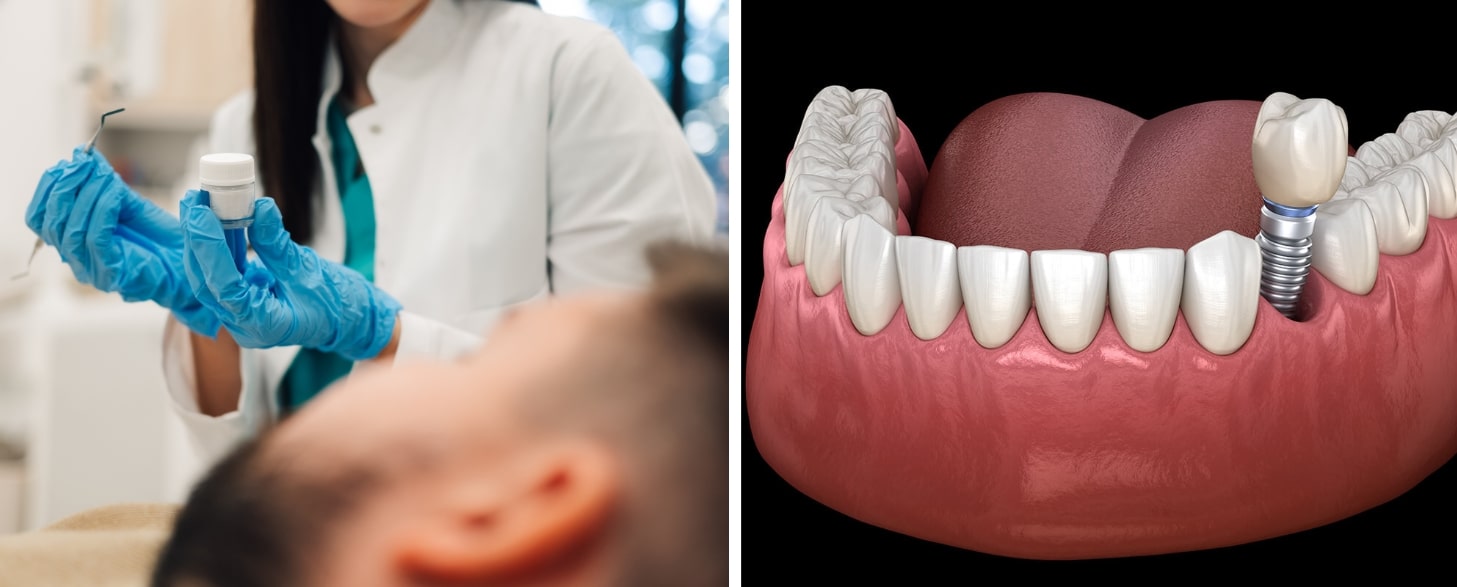Which Causes Greater Discomfort: Bone Graft Or Dental Implant?
San Antonio, TX

When contemplating dental implant or bone graft procedures, it’s natural to be concerned about potential discomfort. Prioritizing your dental health is crucial, and comprehending the expected discomfort level can alleviate any apprehension. This article provides insight into dental implants and bone grafts, elucidating the procedures and associated pain and offering practical recovery tips. By understanding what to anticipate and how to manage it, you can make informed decisions about your oral health, ensuring a more comfortable and confident journey toward a healthier smile.
Dental Implants: The Basics
Dental implants are a widely accepted and efficient remedy for replacing lost teeth. They consist of three primary components: the implant fixture, the abutment, and the dental crown. The implant fixture is surgically placed in the jawbone to serve as an artificial tooth root, providing a stable foundation for the crown.
The process typically involves multiple steps.
1. Initial Consultation: Your journey begins with a consultation with your San Antonio dentist. They will assess your oral health and determine if you’re a suitable candidate for dental implants.
2. Implant Placement: The oral surgeon or periodontist surgically embeds the implant fixture into your jawbone. Local anesthesia or sedation is administered to guarantee comfort throughout the procedure.
3. Healing Period: A healing period can last several weeks or months following implant placement. During this time, the implant fuses with the jawbone in osseointegration.
4. Abutment Placement: After the implant has integrated with the bone, the abutment is attached to the fixture. This serves as the connector between the implant and the dental crown.
5. Crown Placement: The final step involves the placement of the custom-made dental crown, which looks and functions like a natural tooth.
Pain Associated with Dental Implants
The level of pain associated with dental implants can vary from person to person. However, many individuals report minimal discomfort during and after the procedure. Here’s why:
1. Anesthesia: The initial surgical placement of the implant fixture is conducted under local anesthesia or sedation. This guarantees that you will experience no pain during the procedure.
2. Minimal Discomfort: Most patients experience only mild discomfort, akin to having a tooth extracted. Over-the-counter pain relievers are typically sufficient to manage any post-operative pain.
3. Short Recovery: Recovery time is relatively short. You can resume your regular activities within a day or two, with any discomfort diminishing.
4. Customized Care: Your dentist will provide detailed post-operative care instructions to help you manage discomfort and ensure a smooth recovery.
Bone Grafts: What You Need to Know
Bone grafting is often a prerequisite for dental implants, especially if you’ve experienced bone loss in the jaw due to tooth extraction, periodontal disease, or other factors. Inadequate bone density can compromise the success of dental implants, making bone grafts a crucial procedure.
The bone grafting process involves the following steps:
1. Assessment: Your dentist will assess the condition of your jawbone using X-rays and other diagnostic tools to determine if a bone graft is necessary.
2. Grafting Procedure: During the grafting procedure, your oral surgeon or periodontist will harvest bone from another part of your body or use a synthetic bone material. This bone is then grafted onto the deficient area of your jaw.
3. Healing Time: There is a healing period after the bone graft. The graft material can take several months to integrate with your existing bone, creating a solid foundation for dental implants.
4. Dental Implant Placement: The implant procedure can proceed as usual once the graft is fully integrated.
Pain Associated with Bone Grafts
Now, let’s address the pain associated with bone grafts. This procedure involves more steps and is typically considered more invasive than dental implant surgery, which may lead to some discomfort. Here’s what to expect:
1. Local Anesthesia: Similar to dental implant procedures, bone grafts are performed under local anesthesia or sedation. The pain won’t be felt during the surgical procedure.
2. Discomfort: You may experience more discomfort than with dental implants, particularly during the initial days following the procedure. Your oral surgeon will prescribe pain medications to manage this discomfort.
3. Swelling and Bruising: Swelling and bruising are common after a bone graft, but these side effects usually subside within a few days.
4. Longer Recovery: Bone grafts require longer healing than dental implants because you must wait for the grafted bone to integrate fully.
Source: Teeth Talk Girl
Tips for a Smoother Recovery
Whether you’re undergoing a dental implant or a bone graft, there are several steps you can take to ensure a smoother recovery process:
1. Follow Post-Operative Instructions: Pay close attention to the post-operative care instructions provided by your San Antonio dentist or oral surgeon. This will help minimize discomfort and promote proper healing.
2. Pain Management: Take any prescribed pain medications as directed and consider over-the-counter pain relievers if recommended.
3. Rest: Give your body the time to heal by getting plenty of rest and avoiding strenuous activities.
4. Cold Compress: Applying a cold compress to the surgical site can help reduce swelling and discomfort.
5. Maintain Good Oral Hygiene: Keep your mouth clean and follow your dentist’s instructions for oral care during the healing process.
6. Diet Modifications: Stick to soft, easy-to-chew foods and avoid anything irritating the surgical site.
Dental implants and bone grafts are common dental procedures that can greatly improve oral health and quality of life. While the pain associated with these procedures is manageable and temporary, you must consult your dentist it’s advisable to schedule a dentist consultation at Life Smiles Dental Studio San Antonio. This step will provide valuable information and insights to better prepare for your upcoming procedure.




